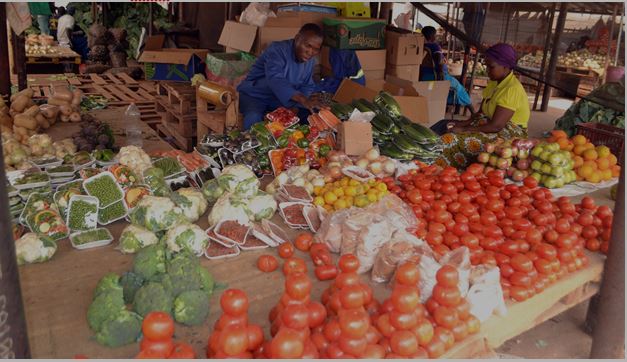A few years ago, it appeared supermarkets were the only place where consumers would find fresh fruits and vegetables in African cities. The situation has changed dramatically. Armed with new food safety knowledge and insights from consumers, informal and open fresh food markets have become preferred destinations for the majority of consumers. Imported fruits and vegetables are also finding their way into these markets such as Mbare in Harare.

While the definition of quality remains elusive for academics and researchers, traders who specialize in fresh fruits and vegetables have mastered the full parameters of quality and freshness in ways that can convince consumers. Thus, supermarkets are no longer the only ones associated with high quality fresh food. In fact, many consumers who find refrigerated fruits and vegetables tasteless prefer open markets where agricultural commodities are delivered straight from the farm.
Quality not just prices
A recent survey by eMKambo in Harare discovered that many consumers now believe that commodities like potatoes, cabbages, tomatoes and a wide range of fresh fruits are better procured from the open market. Vendors who buy for re-sell find the open market the best choice in terms of price, quality, convenience and diversity of fresh commodities. As a sign that they are worried about this trend, most supermarkets send their staff to the open market where they also buy while conducting market research. On the other hand, vendors do not just buy for price but for quality because they also compete with supermarkets in high density areas. Satisfying and retaining customers is a fundamental objective.
The silent competition between supermarkets and the open market has resulted in these competitors upping their game in dealing with diverse perishable commodities. For instance, traders in Mbare have become good at handling more than 70 different types of fresh food commodities per day. Each commodity has different handling requirements and that has triggered a whole cottage industry comprising people who deal in packaging material ranging from plastics to baskets.
More than just appearance
Based on their experiences in the market, traders and vendors have become aware of which commodity influences consumer perceptions. For instance, by looking at the tomato, consumers are often positively influenced to consider cabbages, potatoes and bananas favorably. To that end, traders try to exert more effort in ensuring tomatoes are presented in a more appealing way. While supermarkets continue to appeal to the sense of sight and touch, the open market speaks to all human senses including taste, smell and sound. By shaking a cabbage close to her ear, a vendor can hear that the cabbage is hollow inside. That influences her buying decisions.
In the open market, farmers, traders, vendors and consumers quietly conduct research on a daily basis. They do not use formal questionnaires that are often influenced by what the researcher wants to hear. Quiet research in informal and open markets is often very good at generating precise insights critical for real-time decision making. Through this silent research, traders continuously enrich their quality management processes with fresh insights. Each open market has its own invisible standard guide which every trader is aware of. Traders who have been in the game for many years can tell the variety of a tomato by merely looking at it. They can also see the extent to which an orange was denied water in the field before it came to the market. All these factors have enormous influence on buying decisions.
charles@knowledgetransafrica.com / info@emkambo.co.zw / info@knowledgetransafrica.com
Website: www.emkambo.co.zw / www.knowledgetransafrica.com
eMkambo Call Centre: 0771 859000-5/ 0716 331140-5 / 0739 866 343-6
